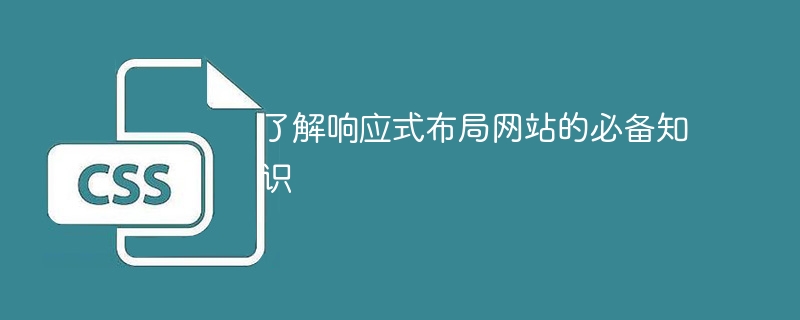
Understand the essential knowledge of responsive layout websites
With the popularity and use of mobile devices increasing, people are increasingly using mobile phones and tablets to browse the web. In order to allow websites to have good display effects on screens of different sizes, responsive layout has gradually become an important trend in modern web design. This article will introduce the necessary knowledge of responsive layout websites to help readers better understand and apply responsive layout.
1. The definition and advantages of responsive layout
Responsive layout means that web designers use technologies such as elastic grids, elastic images, and media queries to enable web pages to adapt to the device and screen used by the user. The size is adjusted adaptively. The advantage of responsive layout is that it can provide a consistent and friendly user experience. Whether on a desktop computer, laptop, mobile phone or tablet, the layout and content of the web page can automatically adapt to the screen size, ensuring that users can browse and operate easily.
2. Basic principles of responsive layout
- Elastic grid: Flexible grid is the core of responsive layout. Designers need to use percentage units rather than fixed pixels to define the layout of web pages so that the web pages can adapt adaptively to the screen size. At the same time, designers can also use media queries to set different grid styles for different screen sizes to ensure that the web page can provide good visual effects and user experience on various devices.
- Flexible pictures: Pictures are an indispensable element in web design. In a responsive layout, designers need to use relative units rather than absolute pixels to define the width and height of the image to ensure that the image can automatically adjust according to the screen size. At the same time, designers can also use the max-width attribute of CSS to prevent images from being distorted or displayed too large on small screens, thereby maintaining the quality and adaptability of images.
- Media query: Media query is a very important technology in responsive layout. Through media queries, designers can set different styles for different screen sizes, including grid layout, font size, image size, etc. The syntax format of media queries is as follows:
@media screen and (max-width: 600px) {
/Style displayed on small screens/
}
@media screen and (min-width: 601px) and (max-width: 1024px) {
/Style displayed on medium screen/
}
@media screen and (min-width : 1025px) {
/Style displayed on the big screen/
}
4. Tips for practicing responsive layout
- Visual and functional separation: When designing a responsive layout website, the visual and functional aspects of the web page should be separated. By using the media query function of CSS, you can set different styles for different screen sizes to maintain the consistency and readability of your web pages.
- Optimize loading speed: Responsive layout websites may have different loading speeds under different screen sizes. In order to improve user experience, designers can optimize the loading speed of web pages by compressing images and using CDN acceleration.
- Test and iterate: When designing a responsive layout website, you should conduct sufficient testing and iteration. By testing with emulators or real devices, designers can identify and resolve issues that may exist on different screen sizes, further improving the design and user experience of web pages.
In the era of mobile Internet, responsive layout websites have become an indispensable design trend. By understanding and applying the essential knowledge of responsive layout, designers can create better and more competitive web designs, improve website usability and user experience, and better adapt to user needs and expectations.
The above is the detailed content of Master the key points of responsive layout website. For more information, please follow other related articles on the PHP Chinese website!






